

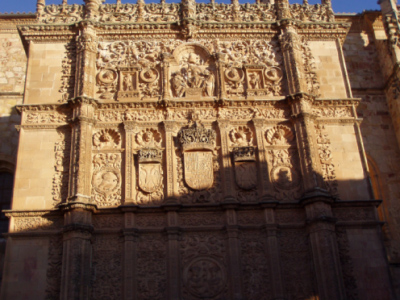 |
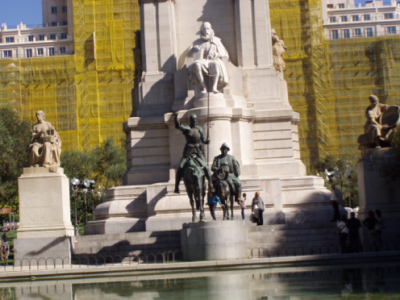 |
|
We made a stop in the university town of Salamanca (students everywhere look the same!) and looked in vain on the Faculty Gate for the famous frog which is said to bring good luck on exams.
|
Upon our return to Madrid, where we had started, we had a brief tour of the city, including the Cervantes Monument. The Spanish make huge heroes of Cervantes and his characters.
|
|
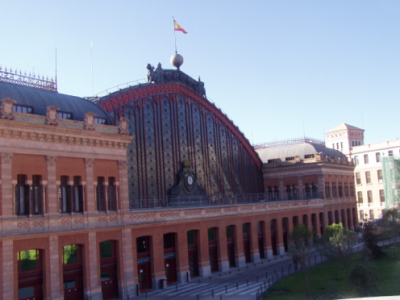 |
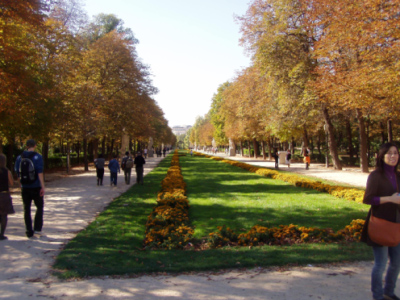 |
|
We also passed by the old train station which is now a botanical garden with the new station right next door.
|
After a morning at the Prado Museum we decided to spend Sunday afternoon at Retiro Park. | |
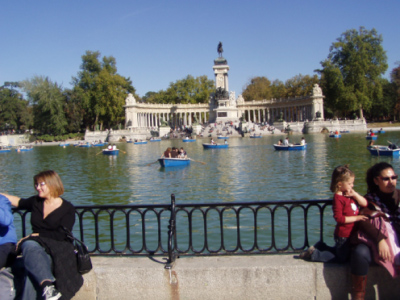 |
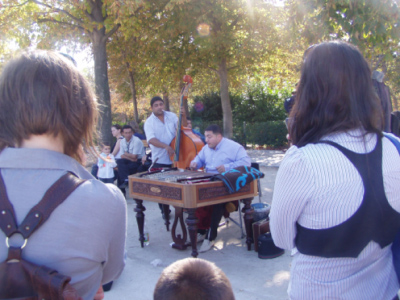 |
|
The Park is THE place to spend a nice Sunday afternoon and was full of local families walking and boating.
|
There were street entertainers as well, including this very talented marimba player. | |
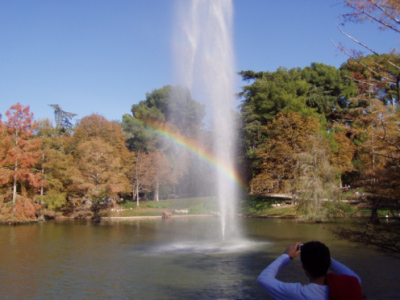 |
Then we took the high-speed train to Barcelona. It took a long time to check in at the station--we found out why when it turned out that the gate agent had to copy down by hand the ticket number and seat assignment of every passenger. But at 300 km/hr it was a quick trip to Barcelona. When we got there we decided to do some laundry and leave sightseeing for the next day. Laundromats are rare in the city and the one we found charged 5 euros (about $7) per load of laundry. | |
| The leaves on the trees were just beginning to turn, which made for a very pretty background for the rainbow. |
||
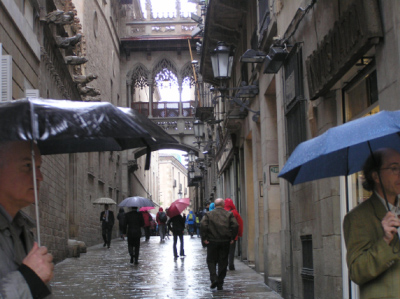 |
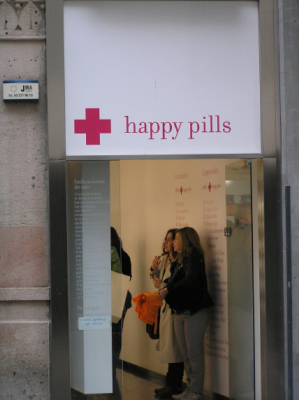 |
|
| On our second day it began to pour. The rain continued the rest of the visit. We became real fans of the subway system, but never did figure out why, with trains running every 1-2 minutes, people insisted on racing down the steps to catch the one at the platform.
|
Pat was sick with a cold, wet, and miserable and was really tempted to try this local pharmacy. | |
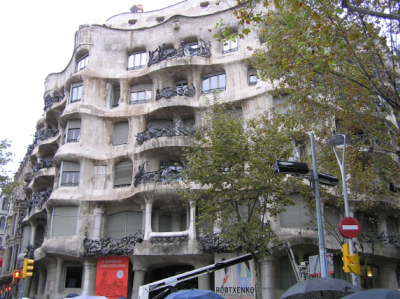 |
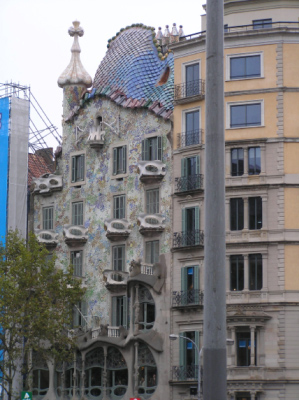 |
|
We did manage to get some sightseeing in, mostly buildings by Gaudi, the famous local architect. La Pedrera is a rather unusual apartment house.
|
This Gaudi is often called the Block of Discord because there was so much opposition to it when it was built. | |
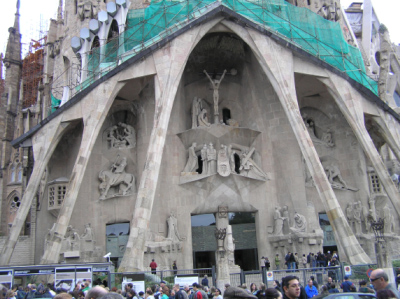 |
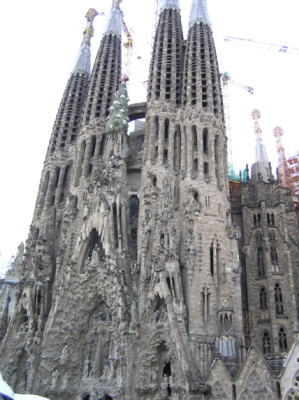 |
|
By far Gaudi's best-known work is the Sagrada Familia Church, designed to be "organic." Begun in 1882, they hope to finish it in another 20 years. . .or 30. . .or
|
||
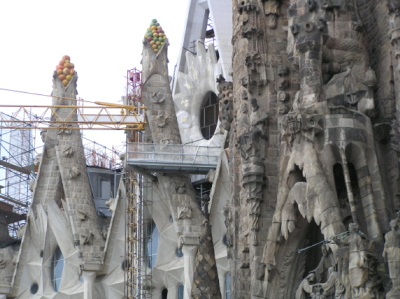 |
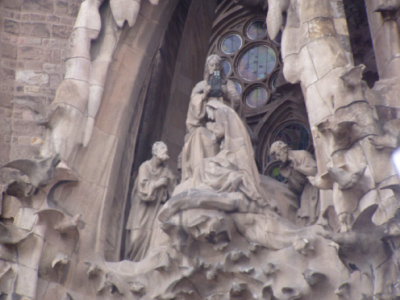 |
|
Some of the decorations are a little bizarre, like the ice cream cone effects on one facade.
|
Other images, while executed in an unusual style, are more traditional. | |
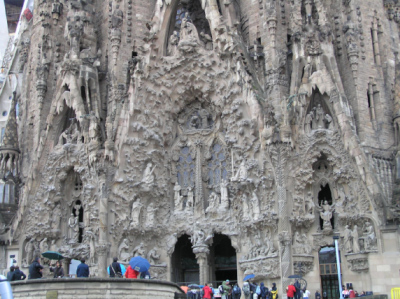 |
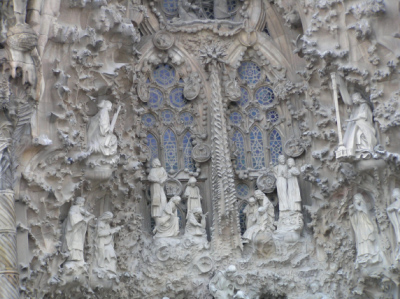 |
|
The whole effect is somewhat rough and unfinished--rather like a a wax mode exposed to heat.
|
||
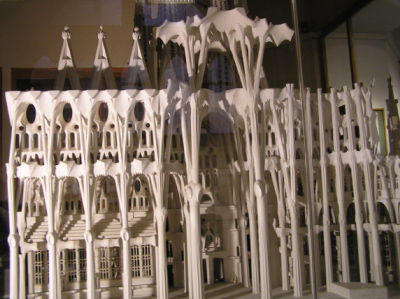 |
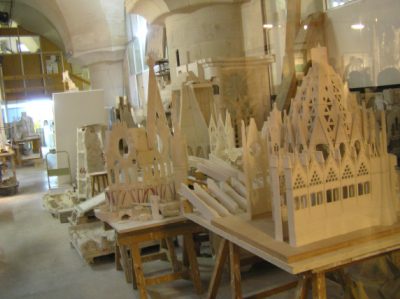 |
|
The large museum in the church has extensive models that show Gaudi's vision for the structure and how he used nature as his inspiration.
|
||